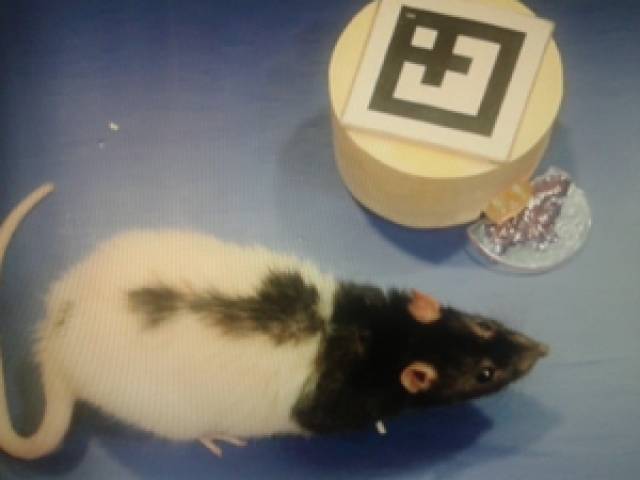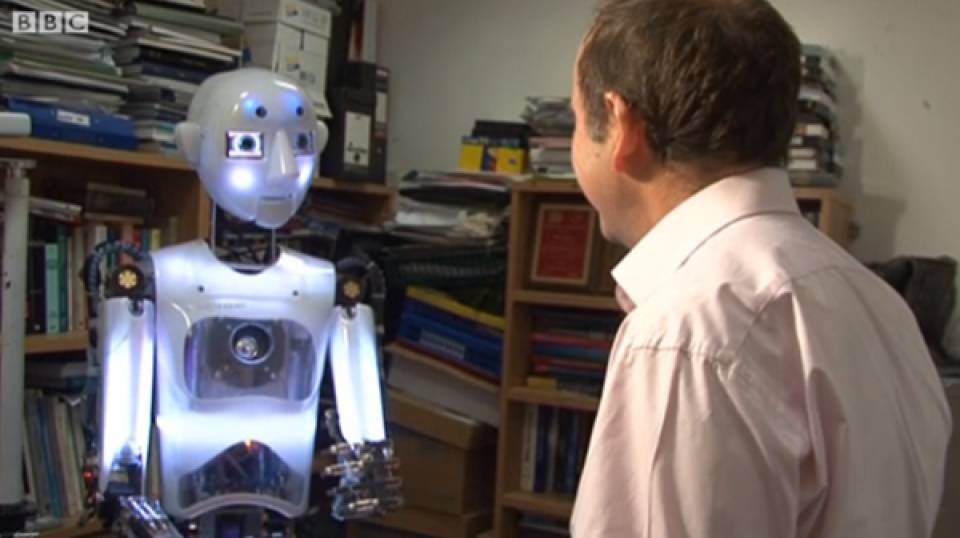This is achieved through a combination of virtual reality and teleoperator systems. The visitor to the remote place (the destination) is represented there ideally by a physical robot. Such rapid transportation to distant locations, where you have the strong feeling to be there, and where the local people in the destination experience you as there, has many economic and practical advantages. It is a step beyond approaches such as video conferencing which do not give participants the physical sensation of being in the same shared space, and certainly not the physical capability to actually carry out actions in that space.
The European BEAMING project (www.beaming-eu.org) has achieved early examples of this goal, in relation to humans beaming to distant places and interacting with people there. For example, see how a scientist in Barcelona was digitally beamed to London to be interviewed by a BBC journalist there. It is just one of the multiple possible applications of such technology. In the framework of this project a system for remote medical assistance for patients at home that can be “transported” to the hospital is also being developed.

A combination of several different technologies were used:
- Virtual reality places people in an alternate computer-generated world where they can look and move around, carry out tasks - all at life-size and perceived in stereo 3D. People generally have the illusion of presence - that is of being in the computer-generated space as if it were a real space. Thus the human participants in the system were in a virtual reality lab at the event Lab which is at the Mundet campus of the University of Barcelona. The rat was located about 12 km away in an animal care facility in Bellvitge.
- Tracking technology was used to track the movements of the rat in its arena, and the tracking data was transmitted over the internet to the computers running the virtual reality simulation in Mundet. This tracking information was used to control a virtual human character (an avatar) that represented the rat. Hence whenever the rat moved its avatar moved too, in a representation of the rat arena but scaled up to human size. Hence the human participant shared the virtual arena (which looked like a room with some pictures on the walls) with a humanoid avatar.
- Teleoperation technology in conjunction with tracking was also used. The movements of the human in the virtual reality were also tracked, and this tracking data was sent to computers in Bellvitge which controlled a small robot that was located in the rat arena. So whenever the human moved in the virtual space so the robot moved in the rat space.
The humans in a small study interacted with the rat. They had to learn to entice the rat-avatar to go near some specific pictures in the virtual reality. The humans didn’t know about the jelly on the robot, but they typically learned that the rats would follow them, so they had to draw the rats out of their normal behaviours (staying in the corners and staying close to the edges) to get them to move around so that both could stand by the same picture.
Overall the study showed that that the system technically performed well and that there could be an interesting interaction between the animal and the human and remotely located beings at different scales.

